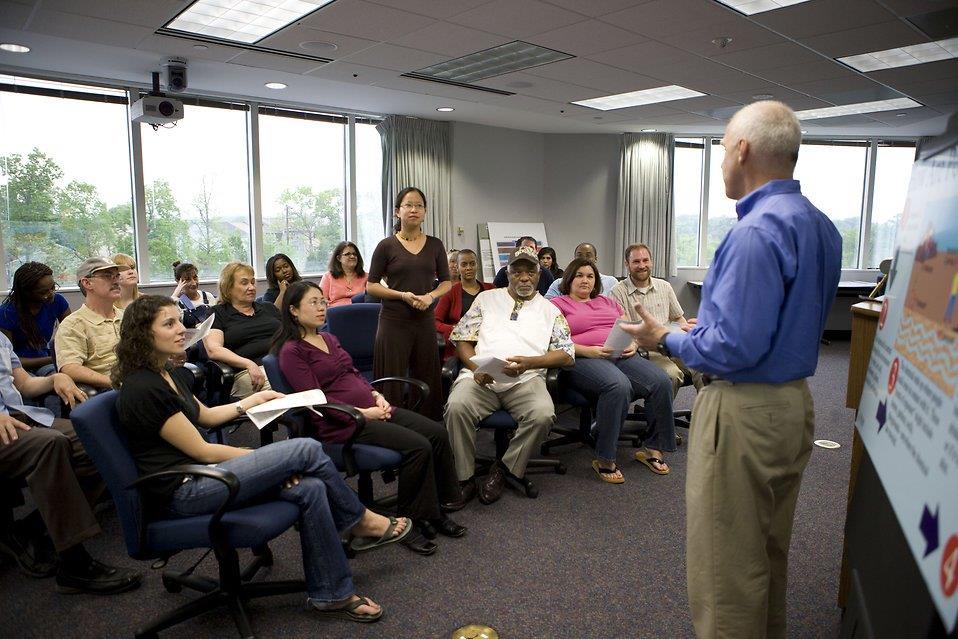
Who should notify residents when a potential community crisis looms large?
In the wake of the Flint water crisis, the U.S. House of Representatives voted overwhelmingly to require the U.S. Environmental Protection Agency (EPA) to inform the public when it discovers unsafe concentrations of lead and other contaminants. The vote took place on February 10, during a House Democratic Steering and Policy Committee hearing on the impact of Flint’s lead-poisoned water on the health of that city’s children.
Specifically, the Safe Drinking Water Act Improved Compliance Awareness Act (H.R. 4470), sponsored by Reps. Dan Kildee (D-Mich.) and Fred Upton (R-Mich.) and passing by a 416-2 margin, will require the EPA to inform state officials of water contamination within 24 hours. If the state fails to act, the bill will require the EPA to notify the public. The bill comes after the EPA deflected much of the blame for the Flint water crisis onto the state of Michigan. To become law, the bill also requires Senate approval.
This proposed legislation could have far-reaching implications for state and local governments, as it threatens to usurp the authority of local officials to decide when, where, and how to inform the public about an impending crisis or disaster.
The issue of crisis communications and who informs residents about a natural or man-made disaster or public health crisis becomes particularly relevant in the face of the Zika virus outbreak, which the author of a recent Los Angeles Times op-ed likened to the Ebola epidemic.
Both epidemics, according to the author, were detected late, and by the time health authorities fully understood the magnitude of the Ebola outbreak, “the virus had been spreading for months and across multiple international borders.” The patterns that emerged during the Ebola virus outbreak, that is, “slow detection, sluggish response, and endangered vulnerable populations,” will, says the author, “repeat themselves” until we address the obstacles to swift and factual communication with residents.
While 9/11, the Ebola and Zika outbreaks, and the Flint water crisis may seem like extreme situations that don’t apply to “typical” communities, public health crises, natural and man-made disasters, and other emergency situations have become much more common and difficult to address. As discussed in ICMA’s Emergency Management: Principles and Practice for Local Government (2nd ed.), “Unfortunately, communities in the United States [and throughout the world] are becoming more and more vulnerable to major disasters…” and “the potential for catastrophe is growing.” More and more often, communities may find themselves in situations in which they must communicate information regarding risks and hazards to the public.
What You Can Do
To stay ahead of such situations, local managers and officials should (1) engage residents in building community relationships and (2) ensure that there is a crisis or risk communications program in place within their community. The American Water Works Association (AWWA) has created a Public Communications Toolkit, which contains all of AWWA's information on public communication, from talking points to Journal AWWA articles to presentations.
The ICMA InFocus report, “How Civic Engagement Transforms Community Relationships,” discusses the benefits of bringing residents together to build the kind of social capital required to weather a disaster or crisis. And ICMA’s “Engaging Your Citizens Using Social Media” provides a series of steps local governments can take to encourage higher levels of resident engagement using existing and emerging technologies, situations that are essential to informing the public about a potential emergency or disaster.
Finally, developing a crisis communications plan before disaster strikes, as described in the ICMA InFocus report, “Effective Crisis Communication,” can help managers “translate information about a hazard into language your citizens, personnel, and the media will clearly understand.”
Stay In the Know about what's happening in local government by subscribing to the Knowledge Network blog.
New, Reduced Membership Dues
A new, reduced dues rate is available for CAOs/ACAOs, along with additional discounts for those in smaller communities, has been implemented. Learn more and be sure to join or renew today!
